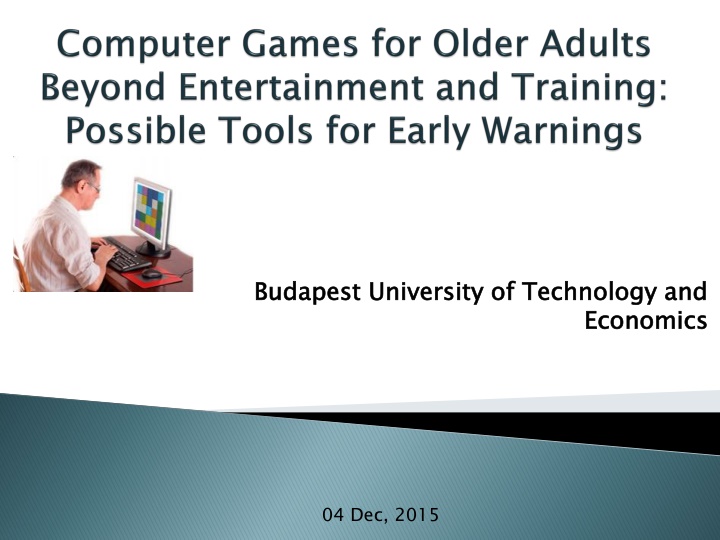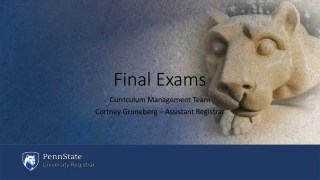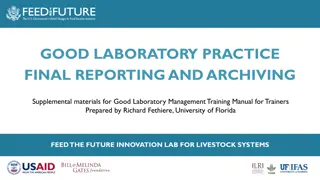
Early Detection Approaches for Cognitive Impairment in Aging Population
Explore the challenges and methodologies for early detection of Mild Cognitive Impairment (MCI) and dementia in the aging population. Learn about the significance of cognitive testing, game-based interventions, and assessment strategies to improve the quality of life for older adults.
Uploaded on | 2 Views
Download Presentation

Please find below an Image/Link to download the presentation.
The content on the website is provided AS IS for your information and personal use only. It may not be sold, licensed, or shared on other websites without obtaining consent from the author. If you encounter any issues during the download, it is possible that the publisher has removed the file from their server.
You are allowed to download the files provided on this website for personal or commercial use, subject to the condition that they are used lawfully. All files are the property of their respective owners.
The content on the website is provided AS IS for your information and personal use only. It may not be sold, licensed, or shared on other websites without obtaining consent from the author.
E N D
Presentation Transcript
Budapest Budapest University of Technology and University of Technology and Economics Economics 04 Dec, 2015
Motivation Possible approaches Conceptual model Challenges How to assess the cognitive state Proof of the concept ICT architecture and components Conclusion and future work 2 22 May, 2015 ICT4AgeingWell ICT4AgeingWell Conference Conference, 20 , 20- -22 May, 2015 22 May, 2015
Primary Impairment (MCI) Dementia is one of the main causes of dependency MCI: conversion rate to dementia is much higher Detection and treatment in the early phase can delay the progression Hard to identify when the natural decline becomes abnormal MCI is not a specific disease problems with memory, attention, visuospatial skills (the ability to interpret objects and shapes) 3 Primary g goal Impairment (MCI) oal: early detection : early detection of Mild Cognitive (+ of Mild Cognitive (+ training training) ) WHY WHY? ? planning language 22 May, 2015 ICT4AgeingWell ICT4AgeingWell Conference Conference, 20 , 20- -22 May, 2015 22 May, 2015
Cognitive tests: only when there are clear signs of cognitive deficit early detection is rare Traditional, validated, paper-based clinical tests require specialist centres and highly trained professionals Growing special monitoring and training purposes interest computer in the games development for of cognitive 4 22 May, 2015 ICT4AgeingWell ICT4AgeingWell Conference Conference, 20 , 20- -22 May, 2015 22 May, 2015
Game Adapting well-known, popular games Transforming special clinical tests (Paired Associates Learning, Corsi block-tapping) Developing new games specially designed for this purpose Monitoring policy: Voluntary Controlled Game development development policy policy: : Monitoring policy: 5 22 May, 2015 ICT4AgeingWell ICT4AgeingWell Conference Conference, 20 , 20- -22 May, 2015 22 May, 2015
Assessment On an absolute scale O Only Reference Comparison to a reference group (inter- personal) Comparison reference Assessment of of the the mental mental state state nly significant Reference for significant change for change change is is to change detection to be be detected detected detection Comparison reference performance to to a a previously of the previously the same measured same person measured person performance of 6 22 May, 2015
With regular but voluntary use of computer games developed or modified specifically for older adults, we may be able to measure the mental changes and tendencies over time in an entertaining way. 7 22 May, 2015 ICT4AgeingWell ICT4AgeingWell Conference Conference, 20 , 20- -22 May, 2015 22 May, 2015
Typical performance series of a player measured with a given computer game 8 22 May, 2015 ICT4AgeingWell ICT4AgeingWell Conference Conference, 20 , 20- -22 May, 2015 22 May, 2015
How using computer games? How to cope with the typically heavy caused measurement environment? How to motivate long run? How to compare different games, which is basically a special sensor-fusion problem? to measure measure cognitive cognitive performance performance heavy noise (home) noise by the uncontrolled motivate people to take part in the compare performance performance shown in 9 22 May, 2015 ICT4AgeingWell ICT4AgeingWell Conference Conference, 20 , 20- -22 May, 2015 22 May, 2015
entertainment power (contradictory requirements ) capability measurement NUM. OF NUM. OF CORRECT LOGS (NO GIVEN UP) MOST FREQUENT SUBTYPE NUM. OF GAMELOGS OPENED (June 01, 2014- March 31, 2015) NUM. OF PLAYERS (MOST FREQ.SUBTYPE) STDPlaytime / AVGPlayTime (BASED ON TOP 10 PLAYERS) GAMELOGS (GIVEN UP NOT INCL.) (June 01, 2014- March 31, 2015) NUM. OF SUBTYPES PLAYED GIVEN UP GIVEN UP % GAME PLANAR 17 495 1 535 8.8 15 960 10 10 736 225 0.84 MEMORY 16 408 1 700 10.4 14 708 22 7 864 257 0.30 65 WGUESS 14 194 629 4.4 13 564 8 167 162 0.57 BLOCKS 10 415 830 8.0 9 585 5 6 358 202 0.49 CONNECT HIDDEN PUZZLE ROTATE FREECELL 10 276 14 563 9 214 7 504 16 059 1 519 6 002 1 650 719 9 768 14.8 41.2 17.9 9.6 60.8 8 757 8 561 7 564 6 785 6 291 12 1 10 18 1 6 079 8 561 1 379 5 662 6 290 167 227 2 198 132 0.65 0.65 ? 0.69 0.39 10 22 May, 2015 ICT4AgeingWell ICT4AgeingWell Conference Conference, 20 , 20- -22 May, 2015 22 May, 2015
H Heavy Outliers omitted. Short term fluctuations between environmental disturbances, by tiredness, etc. ) Short-term independent random variables Performance measured on a reference compared to performance on the current comparison performance) 11 eavy noise noise present (usually caused by interrupts) are (random puzzles, differences minor consecutive fluctuations: zero-mean, stable reference set current set on set will be set (no single is based game 22 May, 2015 ICT4AgeingWell ICT4AgeingWell Conference Conference, 20 , 20- -22 May, 2015 22 May, 2015
Performance measure of a player during nearly one year Noisy distribution of reference and current data sets are to be compared 12 22 May, 2015 ICT4AgeingWell ICT4AgeingWell Conference Conference, 20 , 20- -22 May, 2015 22 May, 2015
Lilliefors test: the normality hypothesis is rejected Nonparametric Kolmogorov-Smirnoff signed-rank test, etc. statistical hypothesis test, tests: two-sample Wilcoxon 13 22 May, 2015 ICT4AgeingWell ICT4AgeingWell Conference Conference, 20 , 20- -22 May, 2015 22 May, 2015
No direct proof - due to the long time needed to detect a critical cognitive change Studies have shown that MCI patients performed poorly on Paired Associates Learning (PAL) computerized cognitive test. Players were asked to perform it. The performance shown in the computer games correlates to their performance measured by the PAL test. 14 22 May, 2015 ICT4AgeingWell ICT4AgeingWell Conference Conference, 20 , 20- -22 May, 2015 22 May, 2015
M3W playground with games M3W playground with games 15 22 May, 2015
16 22 May, 2015
https://m3w https://kognito.eu https://m3w- -project.eu https://kognito.eu project.eu 17 22 May, 2015 ICT4AgeingWell ICT4AgeingWell Conference Conference, 20 , 20- -22 May, 2015 22 May, 2015


![READ⚡[PDF]✔ Yup I'm Dead...Now What? The Deluxe Edition: A Guide to My Life Info](/thumb/20463/read-pdf-yup-i-m-dead-now-what-the-deluxe-edition-a-guide-to-my-life-info.jpg)

















